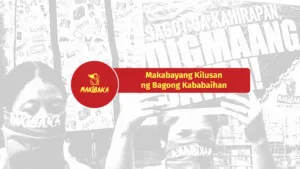CPP condemns 15 November Leyte massacre, urges investigation by joint GRP-NDFP committee
By Communist Party of the Philippines
The Communist Party of the Philippines (CPP) condemns in the strongest possible terms the Armed Forces of the Philippines (AFP) and its Philippine Army 19th Infantry Battalion for the 15 November killing in Kananga, Leyte, of one of the country's leading botanists and two of his assistants.
University of the Philippines lecturer Dr. Leonard Co and his assistants Sofronio Cortez and Julius Borromeo were killed after forces of the 19th IB mistook them for armed guerrillas of the New Peoples' Army (NPA) and fired at them while they were doing fieldwork at the edge of a forested area of Kananga in cooperation with the Energy Development Corporation (EDC). Two members of the team, Policarpio Batute and Ronino Gibe, survived the massacre, while three others — students undergoing internship — remain missing as of this writing.
To cover up for their crime, the 19th IB claims that Co and company were caught in an AFP-NPA crossfire. The 19th IB also claims that they sent their forces to the area in response to reports by the EDC about the presence of NPA members–an allegation denied by EDC officials.
Batute, a local peasant who served as guide to Co's group and survived the carnage, disputed the military claims, saying that there were no NPA guerrillas in the vicinity and that the gunfire came only from the position of the AFP forces. He said that the AFP soldiers did not even verify their targets before shooting as soon as they arrived at the area and fired indiscriminately for more than 15 minutes.
The CPP demanded the immediate pullout of the 19th IB from the area and disciplinary measures for its officers and forces behind the massacre. The CPP also demanded more severe measures against the 19th IB for past crimes against humanity, pointing out that the same military unit was responsible for several fascist atrocities in the past ten years, including the April 2003 mass torture and massacre of nine peasants in Kananga, Leyte and the 21 November 2007 massacre of ten peasants in Palo, Leyte.
"The officials and men of the 19th IB should immediately be demobilized, disarmed and confined to barracks to ensure that the investigation of the Nov. 15 massacre can be carried out smoothly and its perpetrators subjected to criminal prosecution and punishment," said the CPP.
The CPP urged Co's and his assistants' families, colleagues and friends to file their complaints before the Joint Monitoring Committee (JMC) of the Philippine government and the National Democratic Front of the Philippines (NDFP). The Aquino government should instruct the AFP to allow the JMC unimpeded access to the area in order for it carry out a thoroughgoing investigation into the massacre. The investigators should also determine what became of the missing student-members of Co's team.
The CPP extended its deepest condolences to the family, collegues and friends of the victims of this dastardly crime. It also paid tribute to Co's work as one of the leading plant taxonomist in the Philippines.
"Since the early 1980s up to his killing, Leonard Co had been leading in the painstaking work for the first authoritative compilation of information on indigenous medicinal plants in the Philippines. The compilation he had been coming out with has served as an invaluable reference for revolutionary and progressive health workers in giving medical training and services to the masses, especially in the rural areas," said the CPP.
Co was the founder of the progressive community-based primary health care organization Community Health, Education, Services and Training in the Cordillera Region (Chestcore), way back in 1981. This organization significantly helped in the medical training and primary health services given to national minority communities in the Cordilleras and elsewhere and in systematizing the indigenous communities' knowledge about medicinal plants for their own primary health care. One of their achievements under his leadership and tutelege was the listing and documentation of 122 medicinal plants in the region with their scientific and common names, descriptions, illustrations and nutritional and medicinal values.













